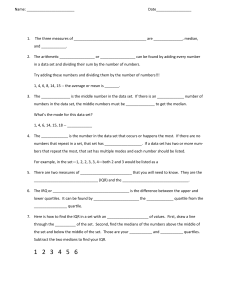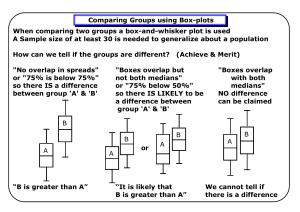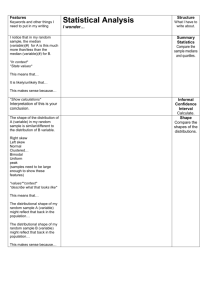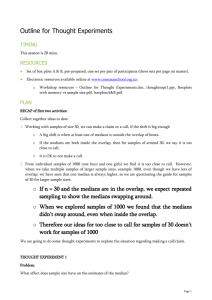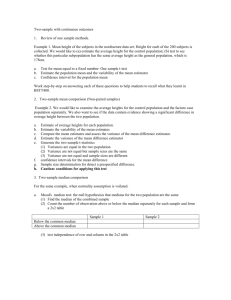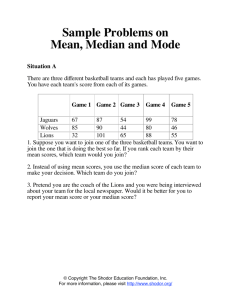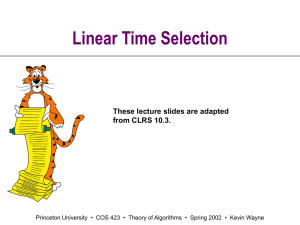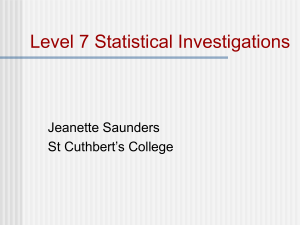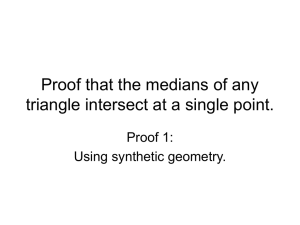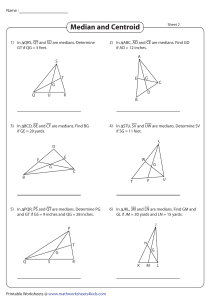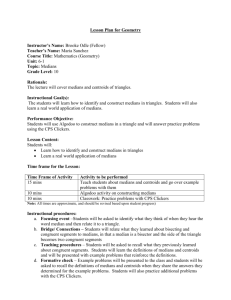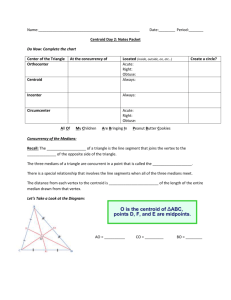Visualising sampling Variation at Level 7
advertisement
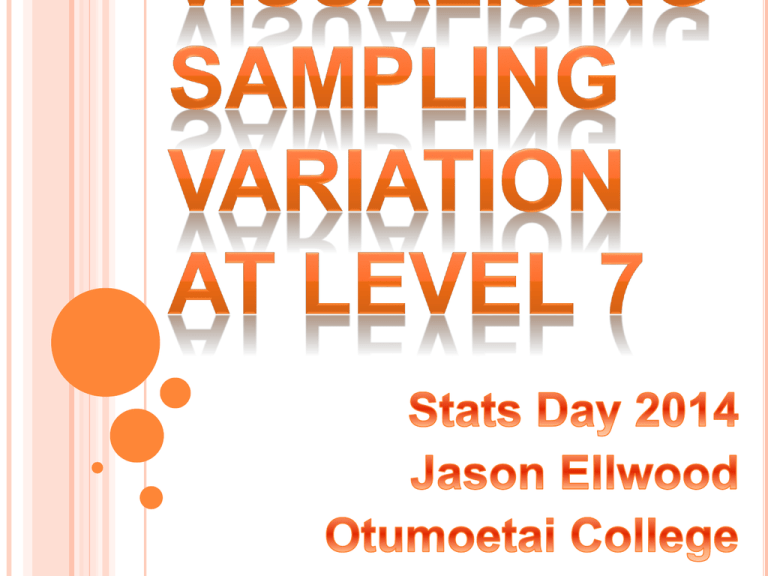
A look through, and go at, some activities designed to give students visual and conceptual appreciation of what sampling variation is and how it impacts on statistical investigation in 91264. Bring a laptop with iNZight and MS Word (or similar) running. Why wait for year 13? Sample variation is a problem from years 9 & 10!! Students should be given the chance to really appreciate this in year 12. Sample Variation is inherent in the sampling process. It is the problem that the inferential statistical methods we study are designed to overcome. We need to have a picture of sample variation in our heads that helps us quantify and understand it if we want to overcome it. I’m concerned that we risk training a bunch of parrots in our students who can spout a memorised sentence or two without really knowing what they’re saying. These are my ideas, some borrowed, some new, to try to bring some understanding to student responses to inferential problems. Perhaps the biggest hurdle is really understanding why we bother with sample variation ideas as teachers… What do you think? Have a chat about this. What is sample variation? How have you communicated this to students? Write down what you think your students would say sample variation is. Write down what you wish your students would say sample variation is. What do you see? Try writing it down How would you communicate this to students at level 2? Medians from samples, n=30, will vary by that much. Most of them will be pretty close to the population median. If we are using any one of these random samples, we’d like our methods to consistently, or at least mostly, give us the same message. Have a play with the iNZight VIT Sample Variation module, using NZIncomes03_11000.csv from the iNZight data file. NB: you need to feed it a sufficiently large data set so that it effectively becomes the population. Change the sample size, but stick to the median at this level. What can we learn about the ‘problem’ of sample variation here. Have trouble getting access to computers?? Run this at the front of the class with students telling you what numbers to input. In years 9 to 11... In year 12... Median in red, quartiles in blue 64 66 68 70 72 74 76 78 80 82 84 86 88 90 92 94 What do you see? What does it mean? Try writing it down How would you communicate this to students at level 2? 96 98 Sample medians are clustered around the population median. Medians vary by about one third of the variation we see in the box/interquartile range. So if the difference between two medians is greater than ⅓ of the distance covered by the two ‘boxes’ (overall visible spread) we can make a call that the two sampled populations tend to be different because the difference between the two sample medians is more than we would expect to see as a result of sample variation alone. If it isn’t, then the difference we see could well have been generated by the sampling process. 1. 2. 3. 4. 5. What happens as we change the sample size? Use NZIncomes03_11000.csv Run the Sample Variation module for the median and both quartiles with n=100 Don’t forget to ‘record your choices’ for each one! Copy the images into MS Word and overlay them, making whites transparent. Students can use this method to explore the 1/5 and 1/ guidelines for themselves. 10 What do you see? What does it mean? Try writing it down How would you communicate this to students at level 2? What do you see? What does it mean? Try writing it down How would you communicate this to students at level 2? Discussion Where to from here? PMI = Cheat’s way to report back to your department
